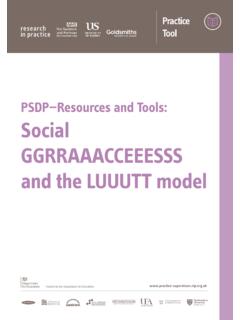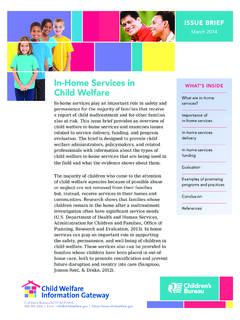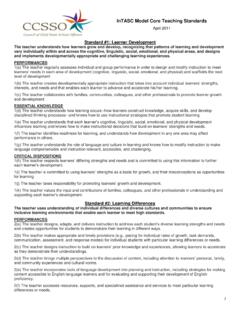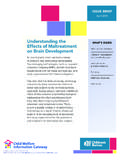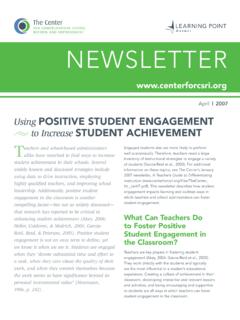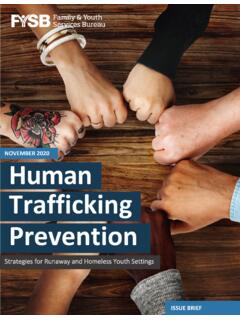Transcription of PSDP—Resources and Tools: Drawing a genogram
1 Funded by the Department for Resources and Tools: Drawing a genogram2 Practice Tool: Drawing a genogramIntroductionGenograms are simple and effective to use in supervision. This learning tool explains what they are and how they can be used to provide rich insights and reflections in supervision discussions. You don t need to be an expert to use genograms. We hope this tool will encourage you to use them with your can find a short film that shows a genogram being drawn and used in supervision on the website next to this tool. We suggest you watch the film after you ve read through it. Other learning tools in this section of the website ( Using systemic questions in supervision and Social GGRRAAACCEEESSS and the LUUUTT model ) also complement the information contained in this one and would be useful to read in by the Department for is a genogram ?
2 A genogram is a visual tool which shows a family tree of at least three generations. It is used to give a pictorial representation of a family system. Genograms are a foundational tool used in systemic practice, where there s a focus on relationships and a recognition that individuals are always embedded in their social context (Burns, 2018). Genograms help us to be curious about relationships in the family from the perspective of different family members. Because they are pictures, they enable us to engage with ideas and information about a family in a different way than if we had read a written report. Read the following quotation taken from Burns (2018): This quote highlights how significant genograms can be for social work practice, given that they can help us to track and reflect on the impact of different patterns of beliefs and behaviour through the generations within families.
3 This includes the impact of adverse experiences on family functioning, as well as identifying relationships within the family system that are resilient and supportive. More specifically, genograms help us to: Patterns of belief and behaviour which may give rise to problems in daily life, here and now, may also be tracked back through the generations. These patterns are strongly influential, the more so if they are unrecognised. They can also be a source of strength and resilience. map family and other significant relationshipsthink about life stages and transitionsunderstand why a particular issue is significant now map out professional help in the past and presentidentify resources within the family s Tool: Drawing a genogramGenograms are usually drawn and discussed with families themselves.
4 They are considered to be a therapeutic tool that enables the family to learn more about themselves and each other. The act of Drawing a genogram and talking about this with a practitioner is useful in creating feedback for the family to consider, and to gain a more rounded perspective about whether or not there are connections between life events and the issues of concern. Similarly, when used in supervision discussions, genograms can help supervisees and practice supervisors to generate feedback and ideas about family life and relationships in exactly the same way. You can see an example of a genogram in figure 1 belowFigure 1: example of a genogramBilly 4 Gillian 12 Graham 17 Michael 23 Michelle 58 Kelvin 60 Hope 48 White British Heroin useBlack African Cannabis useDepression & Anxiety ADHD Violence to each otherViolence from one personApril 19 Police referred due to domestic violence at Julie s home September 19 School referral due to concern about Billy settling into school and his behaviourKeyBarry 44 Julie 40 Social worker AlisonBob Reception year lead / Primary school5 Funded by the Department for typically include the following information.
5 > names and ages of all family members > information on three or more generations > dates of birth, marriage, separation, divorce, death and other significant life events > notation with dates about transitions, migration, illness and other changes in life > other significant relationships and / or connections with community agencies, church, mosque, school etc. >details of cultural background > significant dates and events in relation to social work should always include the practitioner and other workers involved with the family in the genogram , along with information about gender, age, culture and any other factors relevant to working with the information goes on a genogram ? Social worker Reception year lead / Primary school6 Practice Tool: Drawing a genogramHave a look at figure 2 below, which shows you the most commonly used symbols on genograms.
6 More detailed information about symbols used on genograms can be found here. Figure 2: standard symbols for genograms adapted from Power (1992)7 Funded by the Department for genograms in supervision1. Before using a genogram in supervision, it is important that you discuss what genograms are and how they can be helpful to your supervisee. You should encourage your supervisee to use the genogram as a visual prompt to help them think creatively about the family and explain how you want to work with them using this tool. 2. The first stage in constructing a genogram is to get the basic information on the page. We recommend that you avoid moving into discussion at this point with your supervisee and focus on getting the key information for the genogram down on paper in 2-3 minutes.
7 It is important to remember that genograms record a moment in time. They can be redrawn as many times as needed in order to explore family life. For this reason, it is useful to always include the date when you completed a genogram . 3. Having done so, you can then move into a fuller discussion using the genogram as a visual prompt. Ask your supervisee to start to think about what they know about the family . If any factors are significant these should be drawn onto the genogram so that they can be recorded visually. 4. In order to get the conversation started, you might ask the supervisee to pay particular attention to patterns and connections that are transgenerational (across generations) and intergenerational (between generations).
8 8 Practice Tool: Drawing a genogramUsing genograms in supervision (continued)5. We suggest that you also pay attention in your discussion to: > Culture-identities, migration and issues of pride and shame. It can be helpful to identify organizing principles of culture(s) which can include fundamental perceptions, beliefs and behaviour ( in Jewish culture, fear of persecution could be an organizing principle and educational achievement could be an issue of pride or shame (Hardy & Laszloffy, 1995). > The social GGRRAAACCEEESSS is a model that describes aspects of personal and social identity which include gender, geography, race, religion, age, ability, appearance, class, culture, education, ethnicity, employment, sexuality, sexual orientation and spirituality (Burnham, 2013).)
9 It can be helpful to ask your supervisee to reflect on whether any of the social GGRRAAACCEEESSS are significant in helping to understand how the family members respond to each other or to the worker? For example, gender scripts and roles of family members. >Loss and bereavement and patterns of illness, alcohol use, violence or abuse etc. > Circular patterns of behaviour in which family members respond to each other in particular ways ( when the parents argue, the child runs away).What are the migration patterns in the family ?What occupational roles are valued and devalued?How are any intercultural relationships negotiated? What are the dominant religious groups?What are some ideas about success and failure?If there is more than one cultural group in the family , how are differences negotiated?
10 How is social class thought about?What is the relationship between age and values in the group?Who is close in the family and who isn t?How are gender roles defined in the family ?How is family defined in the group?What stories does the family have about itself? You might also find the following prompt questions useful:9 Funded by the Department for is included or excluded in the family ? Who agrees / disagrees with each other in the family ?How are any intercultural / same-sex / cross-class partnerships negotiated? How open can the family be with each other and how much do they know about each other?Are there any aspects of family members culture(s) that are seen positively (that they feel proud of) or negatively (that causes them to feel ashamed)?



